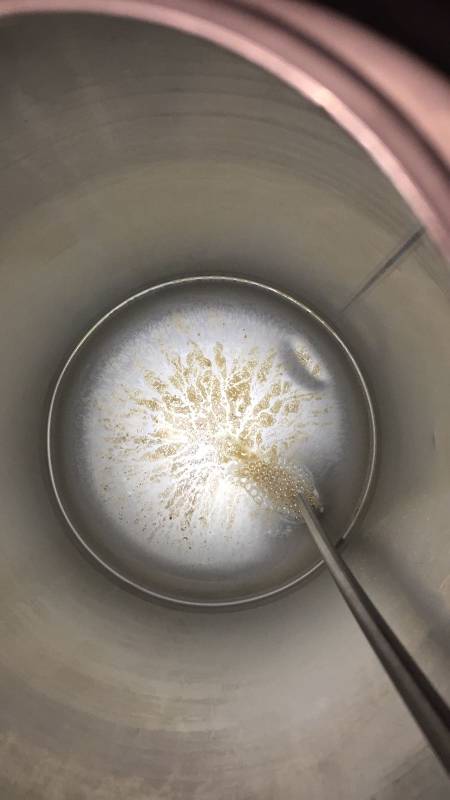A little bit of money fixes everything. If you’re using a Ss Brewbucket, this is an insanely easy fix. I will provide pictures when I get home, but will provide links here to my process.
Install one of these onto your lid. Do NOT install it in the center depressed portion of the lid. Install it exactly as the photos on the website show.
https://www.ssbrewtech.com/products/a-new-accessory-weldless-1-5-tc-fitting
Attach one of these during fermentation:
https://www.norcalbrewingsolutions.com/store/1.5-Inch-Tri-Clover-Connection-Blow-Off-Tube.html
When you’re ready to dry hop, remove the blow off tube and drop pellets through the small hole. There could be small positive pressure from active fermentation, or you could attach a CO2 tank to bottom port. This is just for long enough to create positive pressure while dry hopping. You’re not worried about stirring up sediment at this point so no loss there. If you have really active fermentation going, such as a NEIPA, put the blow off back on. If fermentation has died down so that you won’t have any more solids blowing through the blow off, switch the blow off cane for this.
https://www.ssbrewtech.com/products/1-5-tc-pressurized-transfer-fitting
If slight pressure builds, no biggie, it will vent. Attach the barb to a CO2 tank and regulator. Leave it as is, turned off with no pressure through the remainder of fermentation. The lid will actually bow up slightly with pressure. That’s fine. As long as your pressure fitting isn’t gunked up, it will vent as needed.
When it’s time to cold crash, don’t worry about crashing slow. Crash it fast. Stay there and watch it. The lid will suck in as pressure drops. Turn on the CO2 to the ever slightest pressure, just to pop the lid back up, then turn it back off. When it reaches 35 or even 32 degrees you’re done. Turn off CO2. It won’t suck any more in.
When you’re ready to keg ... guess what, you’ve already set up your pressurized transfer. Just hook into the keg out with a tube to the bottom port. Turn CO 2 on just till it starts flowing. Fill as normal.
Sure it costs a little for all the fittings, but you’ve already spent close to 450 on the brew bucket and FTss. It’s an easy process









































![Craft A Brew - Safale S-04 Dry Yeast - Fermentis - English Ale Dry Yeast - For English and American Ales and Hard Apple Ciders - Ingredients for Home Brewing - Beer Making Supplies - [1 Pack]](https://m.media-amazon.com/images/I/41fVGNh6JfL._SL500_.jpg)







